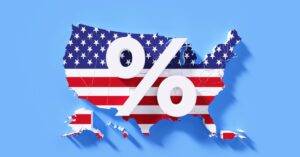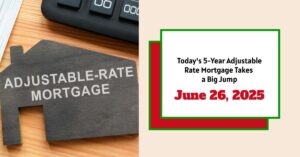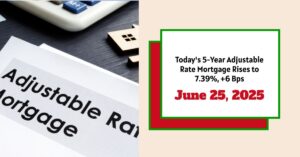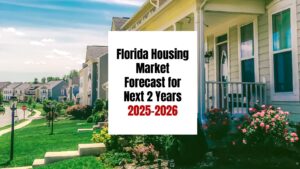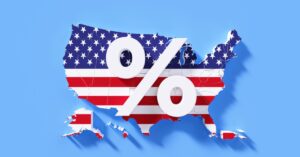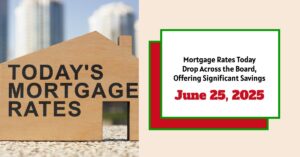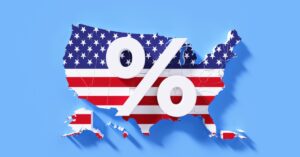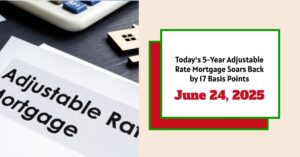Looking for the best deal on a mortgage? Today, June 26, 2025, the states boasting the lowest average 30-year mortgage rates for new purchases are New York, Colorado, Connecticut, California, Massachusetts, New Jersey, Florida, Idaho, Utah, and Virginia, with rates hovering between 6.69% and 6.80%. On the other hand, Alaska, Rhode Island, West Virginia, Iowa, New Mexico, North Dakota, South Dakota, and Maine, have the highest, ranging between 6.90% and 7.05%. But bear in mind as with everything related to money, Your Mileage May Vary!
U.S. States With Lowest Mortgage Rates Today – June 26, 2025
Okay, now that we've got the headline figures out of the way, let’s dive deeper into why these differences exist, what it means for you, and how you can snag the best possible rate, no matter where you live.
Why Do Mortgage Rates Vary From State to State?
It’s tempting to think mortgage rates should be uniform across the U.S., like the price of a Big Mac (though, even that varies!). However, several factors can influence mortgage rates from one state to another. These include:
- Lender Presence and Competition: Not all lenders operate in every state. A state with more competition between lenders might see slightly lower rates as they jostle for your business.
- State-Specific Regulations: Each state has its own set of regulations governing the mortgage industry, which can impact lender costs and, ultimately, the rates they offer.
- Credit Score Averages: States with higher average credit scores might see slightly lower rates overall since lenders perceive lower risk.
- Average Loan Size: The average loan size within a state, coupled with loan limits, might influence rates. Larger loan amounts sometimes come with slightly different pricing structures.
- Risk Management Variation: A lender's internal appetite for risk can result in rate differences. For example, some lenders are comfortable working with loans requiring private mortgage insurance (PMI), while others seek to avoid these.
Essentially, it's a mix of local economics and lender strategy that creates these state-by-state variations. However, it shouldn't affect the rate in any way.
States Showcasing the Lowest Mortgage Rates
Let's take a closer look at the states currently enjoying some of the most competitive mortgage rates, according to Investopedia's analysis and Zillow's data:
- New York: New York is a financial hub along with having a diverse blend of urban areas and suburban communities.
- Colorado: Known for its outdoor lifestyle and booming tech sector, Colorado's attractive real estate market has been balanced by a healthy mortgage rate.
- Connecticut: The charm of Connecticut lies in its good schools and easy access to New York City, and these have drawn people to move and keep the local real estate market stable.
- California: Despite its high cost of living, California's robust economy and strong demand for housing ensures a steady flow of mortgage activity.
- Massachusetts: Top-notch universities and access to healthcare are a selling point of Massachusetts, which keeps its housing market active.
- New Jersey: Located near NYC and with a lot of jobs, New Jersey has a high demand for real estate.
- Florida: The attractive climate and low tax rates of Florida are a big draw, that help sustain the constant demand for housing.
- Idaho: The appeal of smaller town of Idaho and outdoor recreation, the increase in population has led to competition for homes.
- Utah: Utah's tech employment opportunities and a rapidly increasing population are drawing people into the mix.
- Virginia: Virginia gives access to government jobs and military installations, and an overall good quality of life.
These states often have a combination of strong economies, competitive lending environments, and stable real estate markets, which contribute to their lower average mortgage rates.
States with the Highest Mortgage Rates
Now, let’s turn our attention to the states with the higher end of the spectrum:
- Alaska: Remote and with a unique economy based on natural resources, Alaska has factors that lead to higher lending costs.
- Rhode Island: Small geographic location, Rhode Island's economy could be limiting competition, which means that there are higher rates.
- West Virginia: West Virginia faces some economic challenges, and a more sparse housing market could contribute to higher rates.
- Iowa: Iowa's rural setting and agricultural background might lead to less competition among lenders.
- New Mexico: Economic factors in New Mexico may be restricting lending competition and influencing higher rates.
- North Dakota: Limited competition and a sparse real estate market in North Dakota could lead to higher mortgage rates.
- South Dakota: The rural setting, very similar to North Dakota can increase the mortgage rate.
- Maine: Maine's smaller population and a more exclusive real estate market can affect mortgage rates.
National Mortgage Rate Trends – A Broader Perspective
While state-by-state variations are interesting, it’s crucial to understand the broader national trends influencing mortgage rates. According to recent data, the average 30-year fixed mortgage rate for new purchases is around 6.83%. This marks a decrease of 8 basis points over the past three days, reaching the lowest level since April 4th.
However, it’s worth noting that rates have been higher this year. In mid-May, the average surged to a one-year high of 7.15%. Throughout 2025, we’ve seen fluctuations, with rates dipping to as low as 6.50% in March and even lower, reaching a two-year low of 5.89% in September of last year.
Here’s a snapshot of national averages for different loan types from Zillow:
| Loan Type | New Purchase Rate |
|---|---|
| 30-Year Fixed | 6.83% |
| FHA 30-Year Fixed | 7.55% |
| 15-Year Fixed | 5.85% |
| Jumbo 30-Year Fixed | 6.82% |
| 5/6 ARM | 7.27% |
What's Driving These Fluctuations?
Mortgage rates don’t just magically appear; they’re influenced by a complex web of factors, including:
- The Bond Market: Monitor trends in the bond market, especially 10-year Treasury yields.
- The Federal Reserve (The Fed): The Fed's monetary policy decisions play a large role, especially anything related to bond purchasing.
- Lender Competition: The level of competition between mortgage lenders and different loan types.
- Inflation: Concerns around inflation drive rates up, while confidence in controlling inflation tends to bring them down.
Read More:
States With the Lowest Mortgage Rates on June 25, 2025
Are Mortgage Rates Expected to Go Down Soon: A Realistic Outlook
The Fed's Role and What To Expect
The Federal Reserve's actions have a huge impact on mortgage rates. In 2022 and 2023, the Fed aggressively raised the federal funds rate to combat high inflation, causing a dramatic increase in mortgage rates.
The Fed has maintained the federal funds rate at its peak starting in July 2023. Then they announced a first rate cut of 0.50 percentage points in September, with smaller cuts in November and December. However, at their latest meeting, they opted to hold rates steady, suggesting we might not see further cuts for several months. With eight rate-setting meetings scheduled each year, there's a chance we could see several more rate-hold announcements throughout 2025.
How to Secure the Best Rate for You
Now, let’s get to the practical part: how can you get the best possible mortgage rate? Here's my top advice:
- Shop Around, Shop Around, Shop Around: I can't stress this enough! Get quotes from multiple lenders. Don’t just settle for the first rate you see. Compare rates from different banks, credit unions, and online lenders.
- Boost Your Credit Score: A higher credit score translates to lower risk in the eyes of lenders, and a lower risk translates to better rates. Check your credit report for errors and take steps to improve your score if needed.
- Save for a Larger Down Payment: A larger down payment means you'll borrow less money, which can lead to a lower interest rate. Plus, putting down at least 20% can help you avoid private mortgage insurance (PMI).
- Consider Different Loan Types: Explore different loan types like fixed-rate mortgages, adjustable-rate mortgages (ARMs), FHA loans, and VA loans to see which one best suits your financial situation.
- Be Aware of “Teaser Rates”: Be cautious of advertised rates that seem too good to be true. These “teaser rates” often require paying points upfront or are based on unrealistic scenarios (like an ultra-high credit score or a smaller-than-typical loan).
- Negotiate: Don't be afraid to negotiate with lenders. If you get a lower offer from one lender, see if another lender is willing to match or beat it!
- Understand Your All-In Costs: Don't just focus on the interest rate. Consider all costs, including closing costs, lender fees, and any points you might pay.
Buying a home is a huge, life-changing decision, and something I've gone through myself. Make sure to be fully informed and to take your time.
The Bottom Line
Mortgage rates are dynamic and influenced by a variety of factors, from state-level economic conditions to national monetary policy. While New York, Colorado, Connecticut, California, Massachusetts, New Jersey, Florida, Idaho, Utah, and Virginia shows the lowest rates today, remember that your individual rate will depend on your specific financial situation and creditworthiness. Do your due diligence, shop around, and don't be afraid to negotiate to secure the best possible mortgage rate for your dream home.
Invest in Real Estate in the Top U.S. Markets
Investing in turnkey real estate can help you secure consistent returns with fluctuating mortgage rates.
Expand your portfolio confidently, even in a shifting interest rate environment.
Speak with our expert investment counselors (No Obligation):
(800) 611-3060
Also Read:
- Will Mortgage Rates Go Down in 2025: Morgan Stanley's Forecast
- Expect High Mortgage Rates Until 2026: Fannie Mae's 2-Year Forecast
- Mortgage Rate Predictions 2025 from 4 Leading Housing Experts
- Mortgage Rates Forecast for the Next 3 Years: 2025 to 2027
- 30-Year Mortgage Rate Forecast for the Next 5 Years
- 15-Year Mortgage Rate Forecast for the Next 5 Years
- Why Are Mortgage Rates Going Up in 2025: Will Rates Drop?
- Why Are Mortgage Rates So High and Predictions for 2025
- Will Mortgage Rates Ever Be 3% Again in the Future?
- Mortgage Rates Predictions for Next 2 Years
- Mortgage Rate Predictions for Next 5 Years
- Mortgage Rate Predictions: Why 2% and 3% Rates are Out of Reach
- How Lower Mortgage Rates Can Save You Thousands?
- How to Get a Low Mortgage Interest Rate?
- Will Mortgage Rates Ever Be 4% Again?
